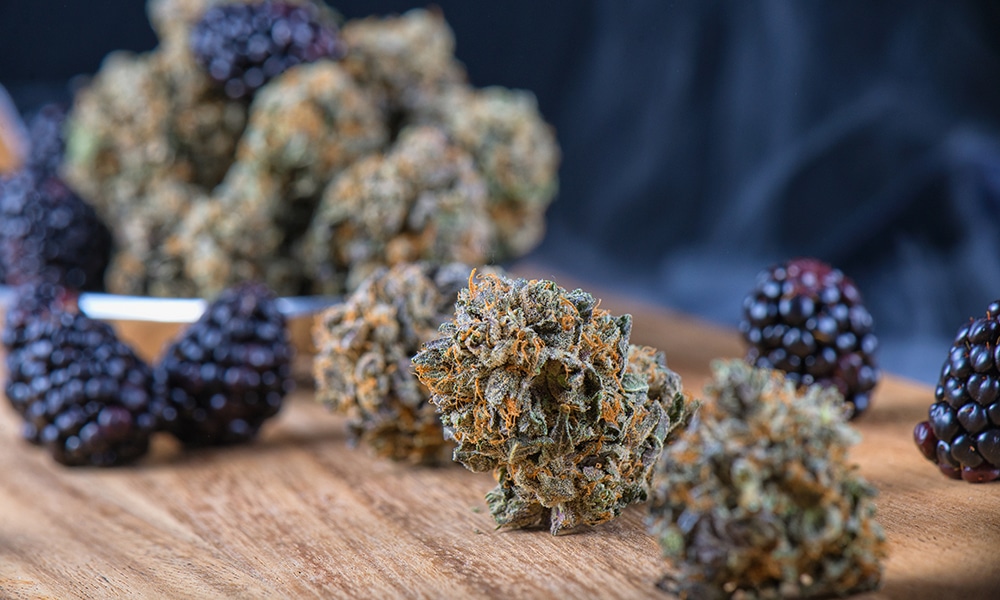As you’re shopping for cannabis products, what’s the first thing you look for? If you’re like most, your eye goes right for the THC and CBD content. These cannabinoids play crucial roles in providing a variety of therapeutic benefits. While important, however, the cannabinoid content is only a part of the equation. To find the best strain of cannabis for your needs, you also need to pay attention to the following list of terpenes.
What Are Terpenes?
Terpenes are similar to essential oils. They’re compounds that cannabis (and other plants) produce and are responsible for things such as the scent and flavor of the plant. There are more than 200,000 terpenes in nature, and more than 200 in cannabis.
The terpene profile refers to the terpenes in a particular strain of cannabis. There are hundreds of different strains, and each one has a different chemical makeup. Just as cannabinoid contents vary between strains, so, too, do the terpene profiles.

List of Terpenes in Cannabis
While there are more than 200 terpenes in the cannabis plant, there are some that are more common than others. Not only do these compounds give the strain its unique aroma and flavor, but they also have medicinal properties. Understanding the effects of different terpenes can assist you in finding which strain can provide you with the effects you want.
Caryophyllene
Caryophyllene has a spicy scent reminiscent of cloves or black pepper. It has anti-inflammatory, antibacterial, and antiseptic properties. It can also protect gastric cells in your body.
Humulene
Humulene has an aroma similar to a hoppy beer, which makes sense as it’s an abundant terpene in hops, a close cousin of cannabis. It provides antibacterial and anti-inflammatory effects, and may also act as an appetite suppressant.
Limonene
Limonene has a citrusy scent, very close to the aroma of a lemon or lime. It’s best known for alleviating anxiety and depression, but it may also function as an antioxidant and anti-inflammatory.
Linalool
Linalool, present in lavender, has a floral aroma and can provide sedative, anxiolytic, and analgesic effects. It can be beneficial for those looking for relief from anxiety, insomnia, or pain.
Myrcene
One of the most abundant terpenes in cannabis, myrcene has a sweet, earthy, fruity scent. With its sedative and muscle relaxant properties, it’s thought to be responsible for the “couch-lock” effect associated with the plant. It can also help to alleviate pain and inflammation, and may even help to prevent the deterioration of cartilage.
Pinene
Pinene, also found in conifers, produces the piney, earthy scent most often associated with pine trees. The terpene has antioxidant properties and also acts as an anti-inflammatory and neuroprotectant. It can also help to alleviate symptoms of respiratory conditions such as asthma.
Terpene Profiles and the Entourage Effect
Terpenes, like THC and CBD, don’t act on their own. They work in conjunction with each other, as well as with the cannabinoids. In addition to providing their own therapeutic benefits, the terpene profile of a cannabis strain can also influence how your body uses cannabinoids. This phenomenon, known as the entourage effect, produces stronger, more effective results than if you were to use a terpene isolate.
When choosing a cannabis strain for your particular needs, look beyond the THC and CBD content. While these cannabinoids are an essential part of the experience you’ll have, the terpene profile of the strain plays a part as well. Taking all of these factors into consideration can help to ensure that you purchase a product that provides you with your desired results and the best experience possible.


